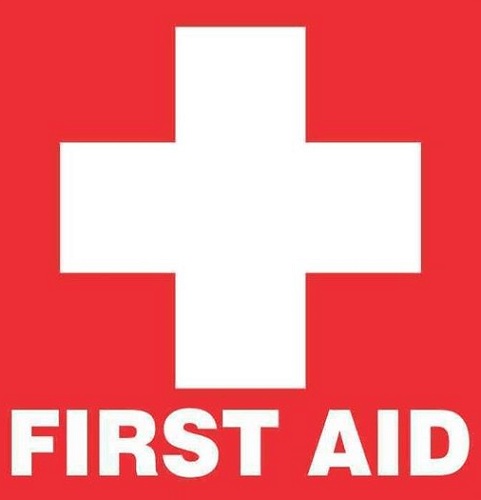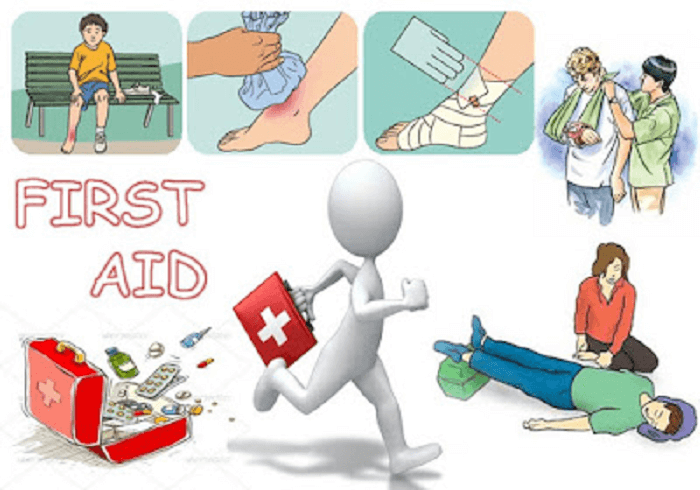First-Aid DefinitionA collection of emergency procedures and practices known as "first aid" are applied to an ill or injured individual to offer immediate care and relief until more sophisticated medical assistance is available. First aid's main objectives are maintaining life and stopping additional damage or disease. Simple first aid skills like cleaning a cut or treating a small burn can range in complexity from CPR (Cardiopulmonary Resuscitation) to managing a catastrophic bleeding wound. Everyone should have a basic understanding of first aid since it can help you react effectively in an emergency and save someone's life. It's critical to analyze the situation, check the patient's airway, breathing, and circulation, and then administer the necessary treatment to administer first aid effectively. For instance, if someone is unconscious and not breathing, you would provide CPR. If someone is bleeding, you should put more pressure on the wound to stop it from bleeding. 
Organizations like the Red Cross, the American Heart Association, or local health authorities frequently offer first aid training. These courses provide life-saving skills and teach people to detect and react to situations. Other subjects included in some first aid classes include treating fractures, sprains, and dislocations and handling choking and cardiac problems. Simple therapies were employed in ancient cultures to cure wounds and diseases, where first aid has its roots. Yet, the idea of first aid in the current world as a systematic approach to emergency care has changed over time. Military doctors created more sophisticated first-aid procedures in the 19th century to treat injured troops in combat. As a result, the first formalized civilian first aid groups were established, including the American Red Cross in 1881 and the St. John Ambulance Brigade in 1887, respectively, in the United Kingdom and the United States. When new technology and therapies were created in the 20th century, first aid continued to advance. For instance, the widespread use of antibiotics in the 1940s completely changed how illnesses were treated. Cardiopulmonary Resuscitation (CPR) was first used to treat cardiac arrests in the 1960s, a significant advancement. First aid has recently changed due to technological and medical advancements. Automated External Defibrillators (AEDs) are now commonly used, allowing non-medical persons to perform life-saving procedures in cardiac crises. The number of first aid procedures accessible has increased with the emergence of new treatments and drugs. In general, the development of first aid procedures has been fueled by an ongoing effort to find new, more effective ways to offer emergency treatment. This has prompted the creation of several efficient procedures and technology that have the potential to save lives and lessen the effects of catastrophes. History of Study of First-Aid TechniqueFirst aid education has a long history dating back to the dawn of civilization when simple methods for treating wounds and diseases were established. For instance, the ancient Egyptians employed honey and oil to treat wounds, while the Greeks created the idea of the Hippocratic Oath, which emphasized the value of aiding the afflicted. The medieval era saw the development of fundamental medical knowledge, mostly passed down through apprenticeships and the rise of monastic institutions. The military and religious groups were responsible for first assistance during this period. Accidents and injuries frequently increased in the 19th century due to increased industry and urbanization, which increased the demand for first-aid education. The first ambulance service was started in France in 1863, and other nations quickly started to imitate it. The St. John Ambulance Society was established in England in 1877 to teach first aid to the general population. By 1887, St. John Ambulance had developed a nationwide network of trained volunteers who could administer first aid in an emergency. As organizations like the American Red Cross, the British Red Cross, the International Federation of Red Cross and Red Crescent Societies started to provide standardized first-aid training programs in the 20th century, first-aid education made great strides. The National Safety Council was founded in the US in 1913 and was instrumental in advancing first aid instruction and occupational safety. More advanced first aid procedures and tools have been created recently due to technological and medical developments. For instance, automated external defibrillators (AEDs) are becoming more prevalent in public spaces, and tourniquets and chest seals are often included in first aid kits. Many organizations and programs are training people of various ages and backgrounds, making first aid instruction broadly accessible. The study of first aid will advance as we continue to learn and develop, enabling us to provide better treatment for those in need and save more lives. Procedures of First-AidFirst aid is the term used to describe the initial medical care given to someone who has been hurt or developed a sudden disease. It is essential for maintaining life and preventing the illness from getting worse. The purpose of first aid is to maintain the victim's stability until qualified medical assistance arrives. Here, we'll go through how to deal with some of the most frequent crises by administering first aid. 
1. ChokingWhen anything becomes stuck in the windpipe and blocks the airway to the lungs, choking happens. When trying to breathe, someone choking may cough, wheeze, or produce a high-pitched noise. Do these actions to assist someone who is choking:
2. BleedingBleeding can occur due to cuts, bruises, or broken bones. To control bleeding, follow these steps:
3. BurnsBurns can occur due to contact with fire, hot liquids, or chemicals. To treat a burn, follow these steps:
4. FracturesA fracture occurs when a bone is broken. To treat a fracture, follow these steps:
5. Heart AttackA heart attack occurs when the blood flow to the heart is blocked, causing damage to the heart muscle. Symptoms of a heart attack include chest pain, shortness of breath, sweating, and lightheadedness. To help someone experiencing a heart attack, follow these steps:
6. StrokeA stroke occurs when blood flow to the brain is disrupted. Symptoms of a stroke include sudden weakness or numbness on one side of the body, difficulty speaking or understanding speech, sudden severe headache, and sudden loss of balance or coordination. To help someone experiencing a stroke, follow these steps:
7. Asthma AttackA chronic respiratory condition characterized by inflammation and narrowing of the airways, leading to breathing difficulties. During an asthma attack, the airways become even narrower, making it difficult for air to flow in and out of the lungs. Acting quickly and effectively during an asthma attack is crucial to prevent it from becoming life-threatening. Here are the steps involved in providing first aid for an asthma attack:
ConclusionKnowing how to administer first aid is vital to saving a person's life in an emergency. Understanding what to do and how to react can help save lives and soothe suffering individuals. Take a first aid course and keep your knowledge current because the details and procedures might change over time.
Next TopicFossil Definition
|
 For Videos Join Our Youtube Channel: Join Now
For Videos Join Our Youtube Channel: Join Now
Feedback
- Send your Feedback to [email protected]
Help Others, Please Share










